Calathea has been one of the most popular houseplants that enthusiasts and collectors turn their gaze into. They are known for their beautiful mesmerizing foliage that folds up at night and unfurls in the morning. In this article, let’s dive in and learn about different types of calathea.
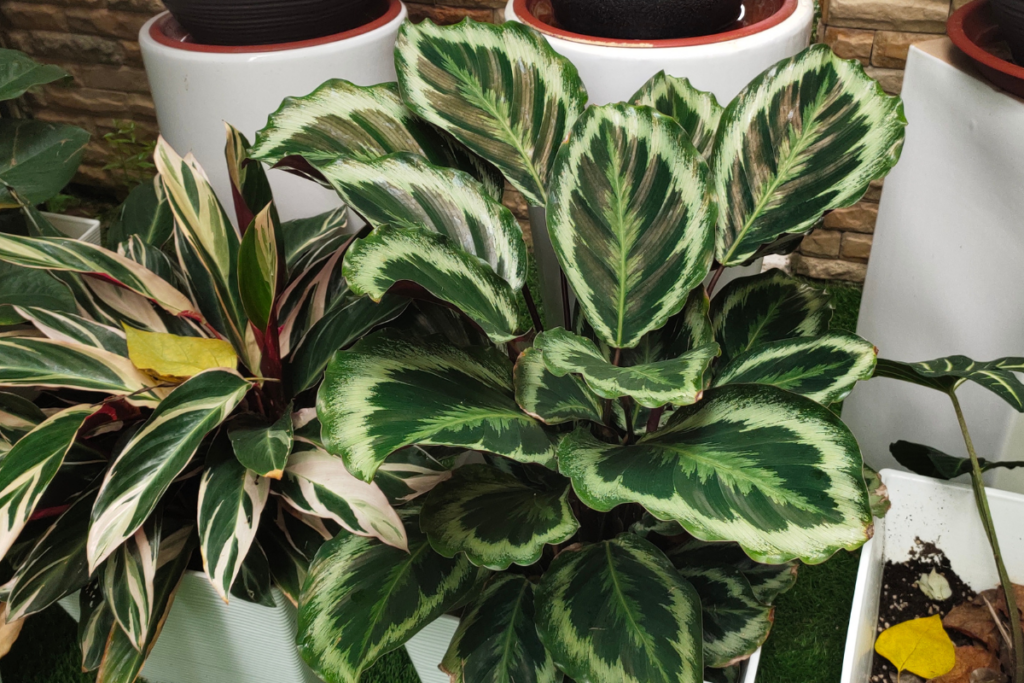
If you’re looking for another addition to your garden, consider some of these Calathea plant types to grow in your home.
Let us see some of the most popular Calathea plant varieties you can choose to grow in your home. In this list, you will learn about different species and cultivars, along with their distinguishing features. We hope this will help you choose the best prayer plants for your garden.
1. Calathea lancifolia or Rattlesnake Plant
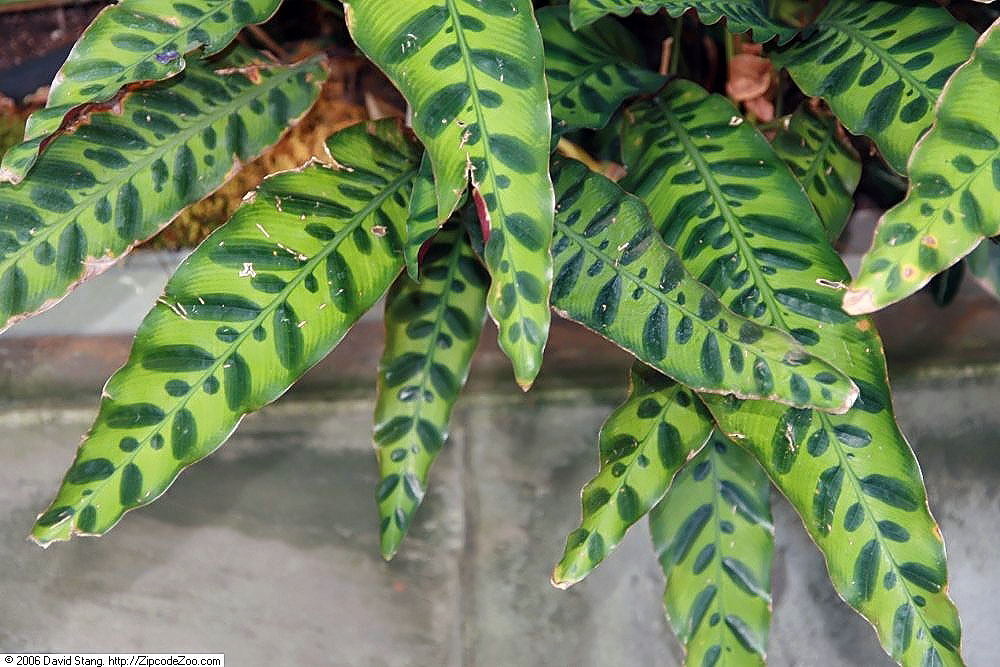
The Calathea lancifolia rattlesnake plant is known to be native to Brazil, one of the few species of Calathea that is characterized by its ruffled edges. Its leaves are striking due to their bright green color and their narrow and long shape.
In addition, its leaves have a distinct pattern of dashes that are deep green in color and are alternated along the leaf’s centerline. Meanwhile, the underside of the foliage has a deep aubergine color that even dashes at night.
Take note that Calatheas are tropical plants. They prefer an environment with a warmer ambient temperature, ranging from 70 to 85 degrees Fahrenheit. It also best thrive in a humidity of at least 50%, relatively higher than other Calathea species. With optimum indoor growing conditions, the Rattlesnake plant can reach a height of up to two feet.
2. Calathea roseopicta or Rose-Painted Calathea
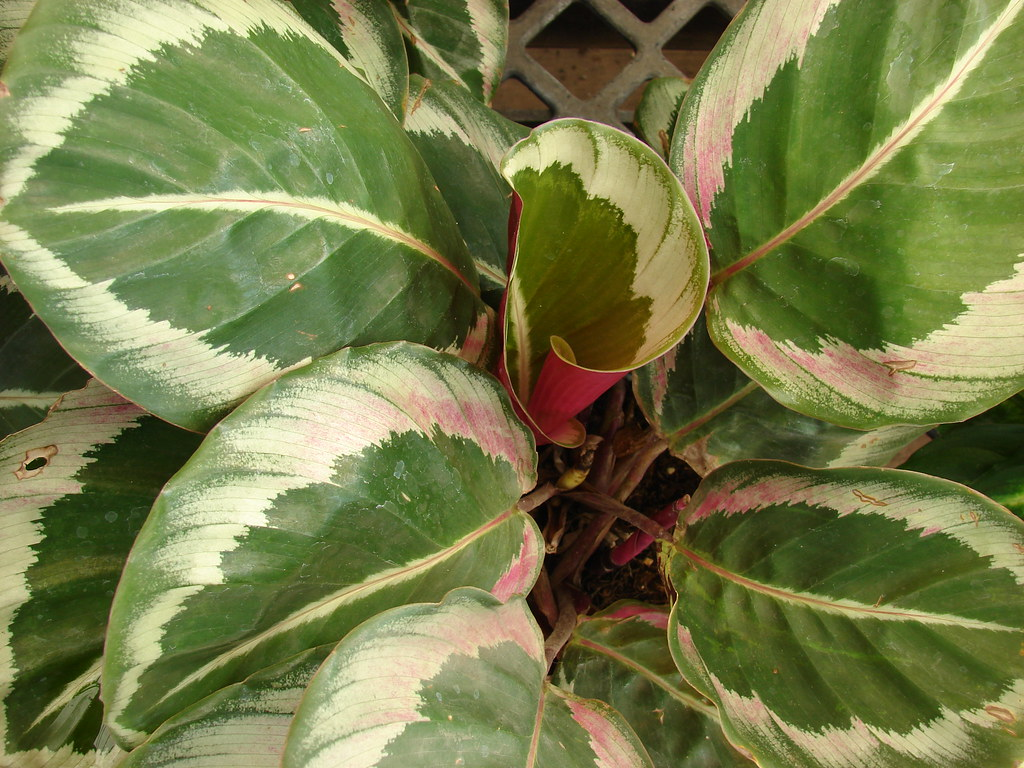
Another Calathea that hails from the northwestern part of Brazil is the Rose-painted Calathea. This Calathea got its name due to its unique foliage. This species has beautiful pink splashes that look like brush strokes along the venations of the leaves.
In addition, its underside has a rosy magenta hue that is vibrant and will catch your eye when it closes at night. However, some say they look similar to other Calathea varieties, such as the Calathea Medallion.
The best part of this plant is that you don’t need to worry too much about taking care of it. They should happily thrive, as long as they get the average indoor temperature, bright, indirect light, and moderate humidity.
3. Calathea orbifolia
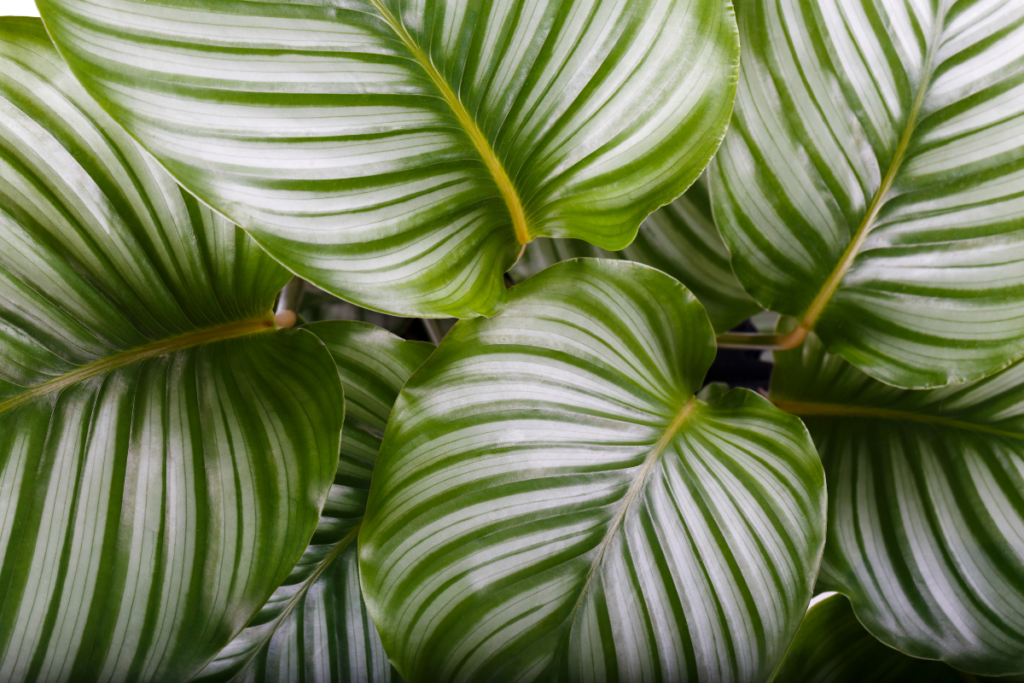
Calathea orbifolia plant is mainly known for its elegant, majestic, large silvery stricken foliage. In fact, it’s among the largest species of Calatheas. Its leaves can grow to have a spread of more than one foot.
This species is known to be native to Bolivia; therefore, it might be pretty hard to grow them indoors compared to other Calathea types. Furthermore, common problems, such as drying out of the plant and browning the leaves’ tips, are encountered without its proper setting.
It is essential to maintain moist but not soggy conditions of the soil and provide its ideal humidity, which should not fall below 50%. Its ideal temperature is around 70F, and it should receive medium, filtered light, and a partial shade.
4. Calathea crocata or Eternal Flame Plant
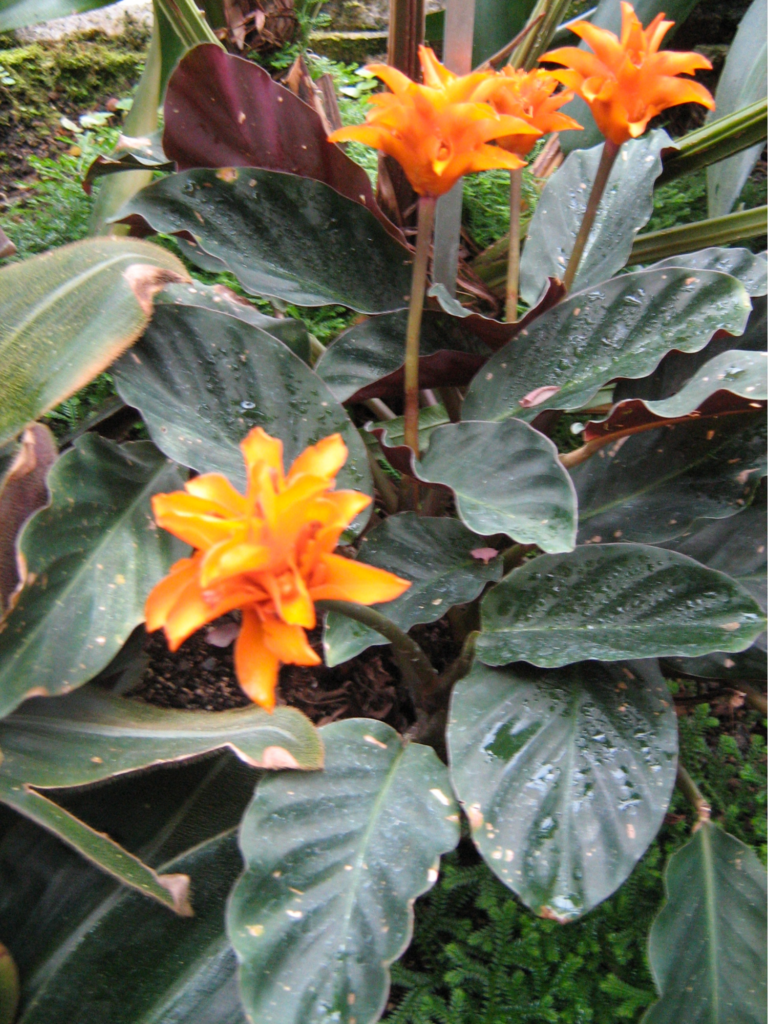
The Eternal Flame Calathea plant has a fascinating foliage with beautiful green stripes and a dark purple underside. However, this plant is most known and loved for its magnificent flowers that bloom for up to 12 weeks or three months. Their flowers have orange spiky-shaped petals, which make them look like little torches or flames hence the name.
This beauty originates from Brazil and therefore thrives in humid and warm environments. To ensure that your plant is healthy, give them a lot of bright, filtered light. Regularly feed them with a well-balanced houseplant fertilizer, especially during their growing season.
5. Calathea musaica or Calathea ‘Network’
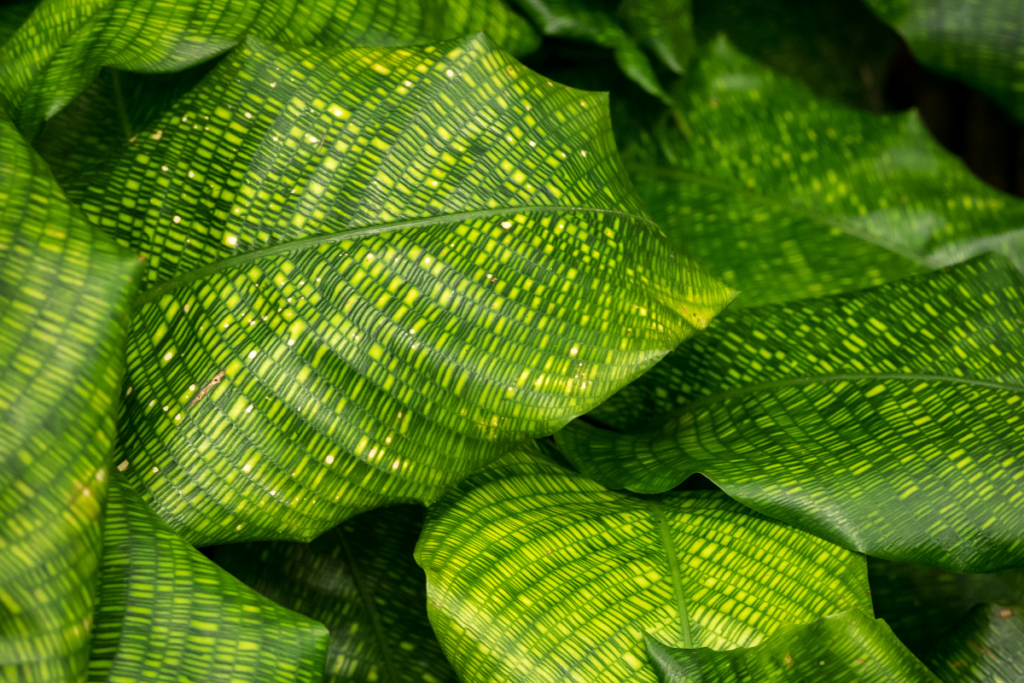
Calathea musaica is one of the most understated and underrated Calathea types. However, this plant would be perfect for you if you appreciate beauty and subtlety.
The leaves of this plant have an intricate network and interwoven markings made up of rectangles and squares. If you look at them close enough, you might compare their leaves to stained glass arts–except in full, vibrant greens.
In addition, this is a very low-maintenance type relative to other varieties. Calathea network also hails from Brazil and therefore prefers warm temperatures indoors and an above-average humidity level.
6. Calathea bachemiana or Lance Leaf Calathea
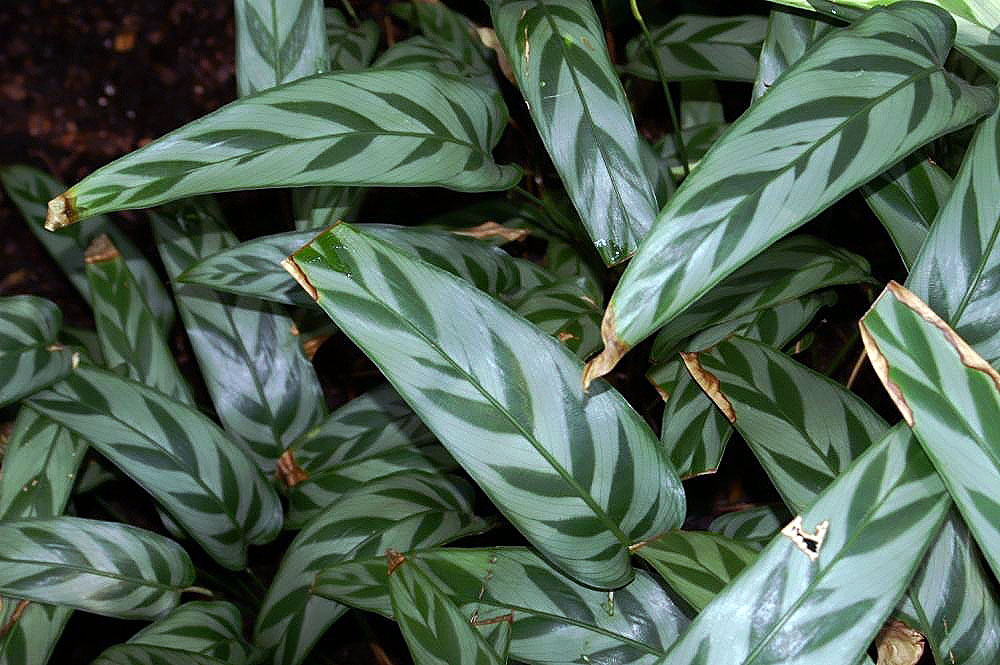
Another Calathea that originates from Brazil, the Lance leaf Calathea is known for its evergreen, more prominently lance-shaped leaves. The upper side of its leaves is also marked with gorgeous, beanstalk-shaped dark green ladders by its center.
Additionally, unlike other Calatheas, this variant thrives in more shade. Specifically, it should be shaded all throughout half of the day and the rest with filtered sun/light time. Finally, this plant also tolerates cooler temperatures, unlike the others.
Therefore, this plant is especially perfect for you if you live in cooler places or if you have a drafty indoors.
7. Calathea lutea or Cigar Plant
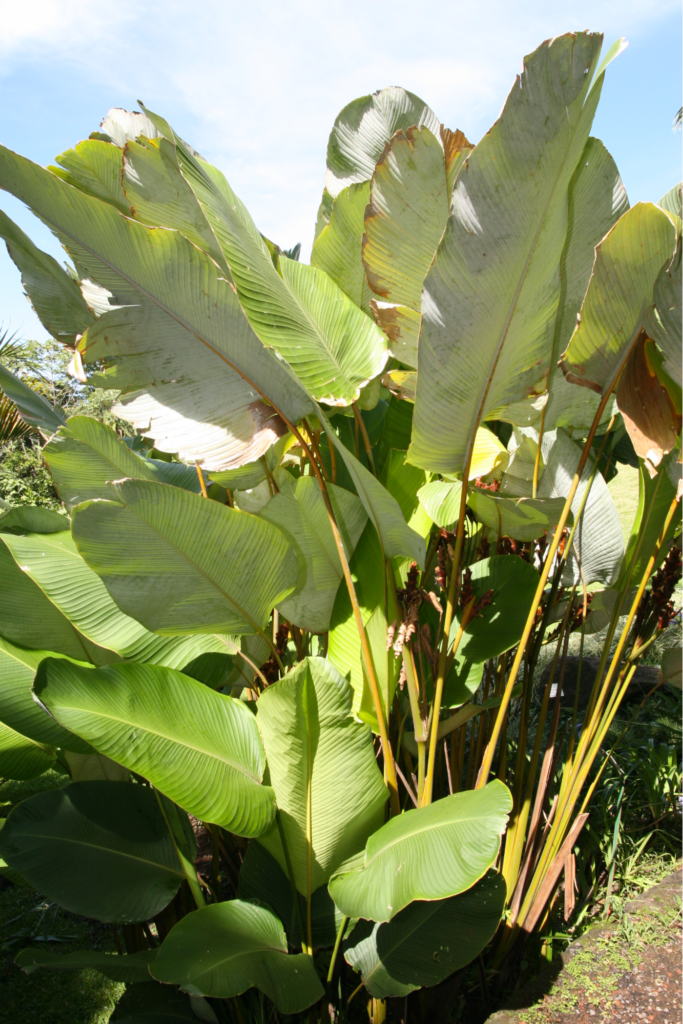
This is a particularly stunning plant known for its tall and upright growth. This is different compared with other Calatheas that are more compact and low-growing. The Cigar Calathea plant also has plain, vibrant green leaves, rather than colorful markings. They also have raised venations that add a lovely texture to its foliage.
When grown outdoors, this plant can grow up to 14 feet tall. However, when you plant them indoors, their size becomes more manageable. The Cigar plant prefers growing conditions similar to other Calatheas. It may also be essential to give them an overhead grow light or rotate your Calathea from time to time to avoid odd and uneven growth.
8. Calathea warscewiczii or Velvet Calathea
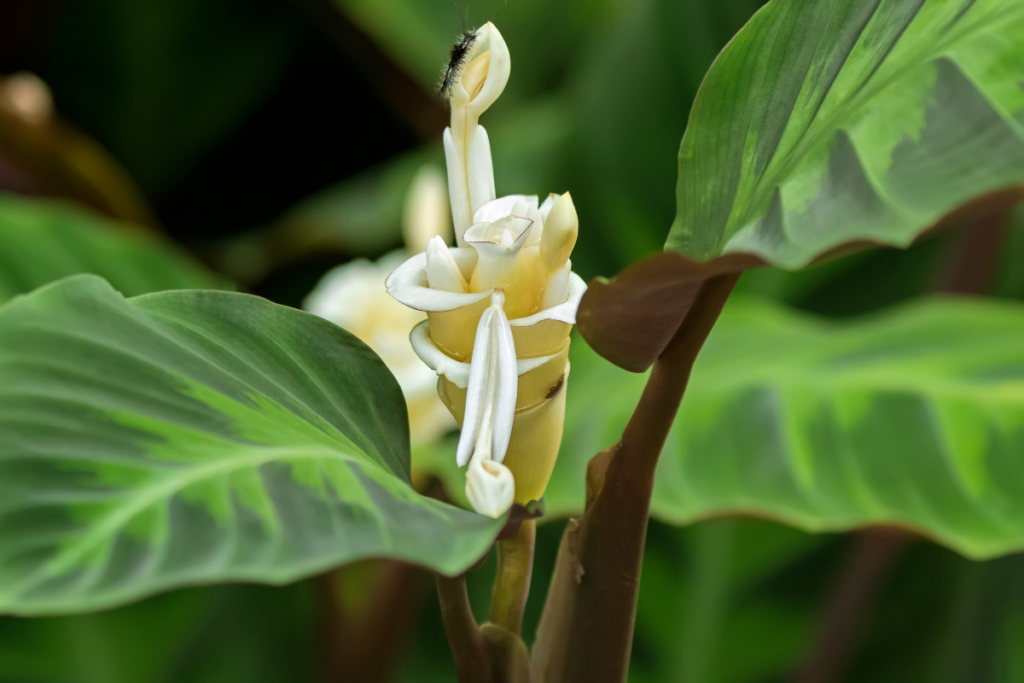
This particular Calathea species has velvety and glossy leaves, with two-tone green markings and a burgundy underside. Compared to others, this is a much larger houseplant that can grow up to four feet wide and tall. They can grow to up to their maximum if given the ideal growing conditions.
The Velvet Calathea is known to be native to Nicaragua and Costa Rica rainforests. Sometimes, it can be quite difficult to replicate their ideal growing conditions. But hey, don’t lose hope!
As long as the temperature is maintained above 65 degrees Fahrenheit, with an optimum level of humidity and medium to indirectly bright sunlight, it will grow happily!
9. Calathea rufibarba or Furry Feather Calathea
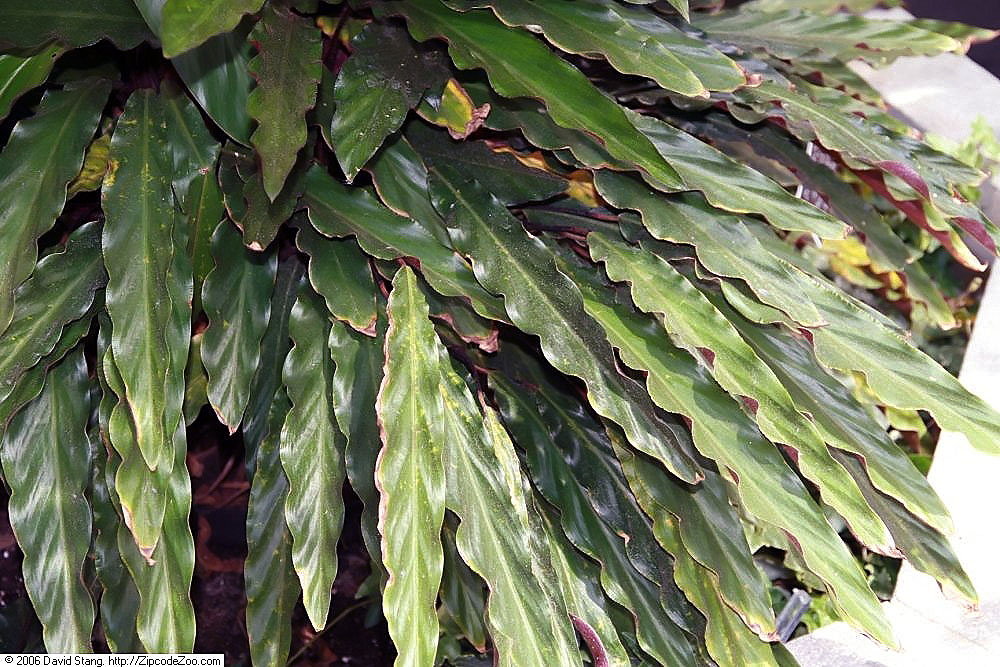
The Furry Feather Plant is known for its leaves that have a texture and appearance similar to feathers. They are pinnate shaped, with ruffled edges and green variegations on the underside, with a furry-feeling, fuzzy, subtle purple underside.
They are known to hail from Bahia, a place in the northeastern part of Brazil. Unfortunately, these plants are particularly susceptible to scorched leaves and root rot. Please make sure they don’t get overwatered or left under direct sunlight.
RELATED: Calathea Rufibarba: The #1 Care, Propagation, and Watering Guide For This Fuzzy Plant
10. Calathea loeseneri or Calathea Brazilian Star
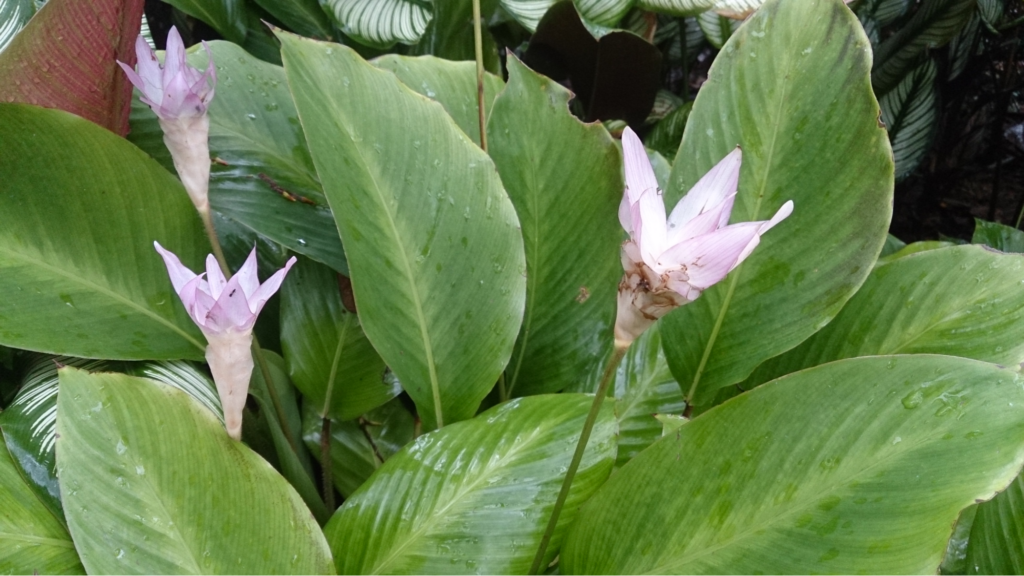
The Calathea Brazilian Star boasts of its lush foliage that is less ornate in shape than the other Calathea species. However, the blooms of this Calathea are unique as it has big, ornate light pink blossoms that are star-shaped. The lovely flowers stand atop the spindly stems of this plant.
11. Calathea majestica or White Star Calathea
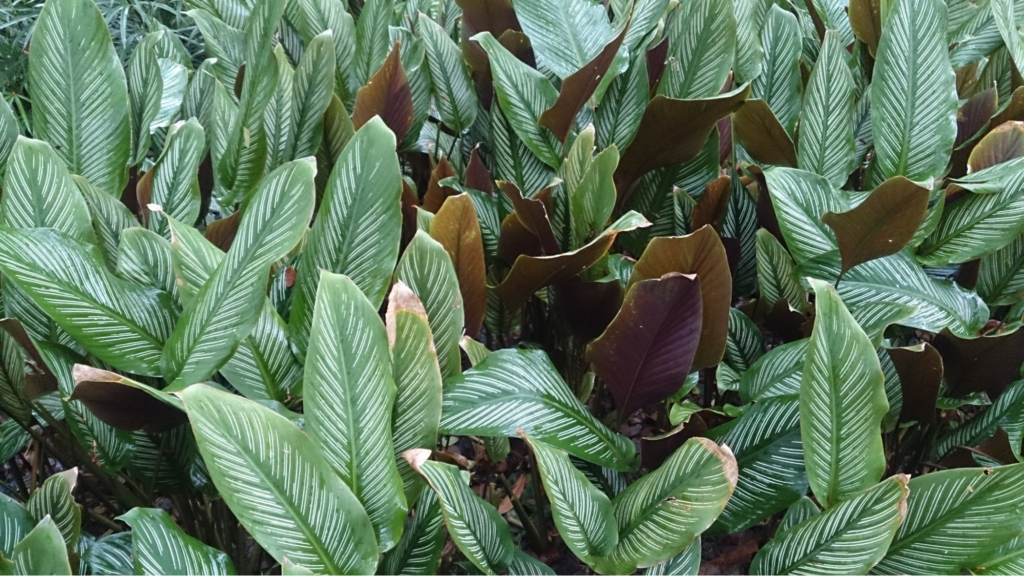
White Star Plant is probably among the most beloved Calathea varieties. This species has an intricate shape with complex markings, perfect for people who love ornate foliage. Its leaves are ovate, with white stripes that start from the leaf’s center towards the edges.
Some Calathea majestica plants even have bright red undersides that can be seen as gentle blush or splotches of pink at the top of the white stripes.
In order to make this plant happy, make sure it receives a steady warm temperature, higher humidity level, and plenty of indirect bright light.
12. Calathea crotalifera or Rattle Shaker
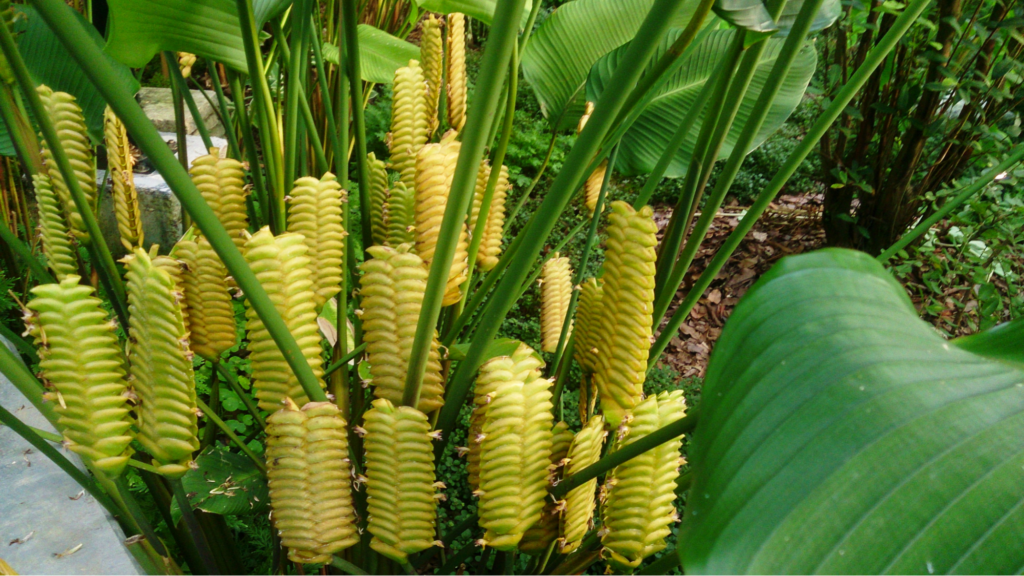
The Calathea Rattle Shaker is mainly known for its flowers. However, it has mesmerizing two column-yellow bracts, which are both stacked together. This resembles the tail of a rattlesnake, hence the name.
They originate from South and Central America and Mexico. Thus, their main requirement is a lot of bright, indirect sunlight, specifically at least eight hours each day. If you live far from the equatorial line, you might have to consider getting artificial grow lights as it is impossible to grow them without enough sunlight.
13. Calathea makoyana or Peacock Plant
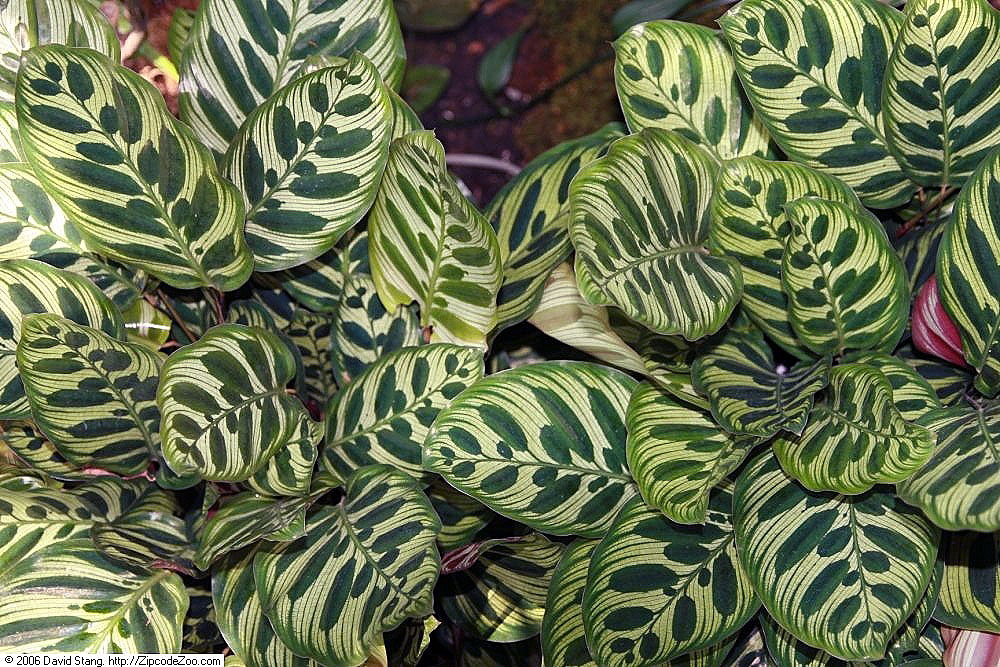
The Peacock Calathea Plant has very intricate patterns and markings as well. Its leaves are characterized by a rim of dark green and alternated brush strokes of deep green that originate from the main vein towards the leaf edges.
Meanwhile, the backdrop of these intricate strokes is very pale and light green–almost white–while its underside has a vibrant violet color. Sometimes, mature plants also feature some pink on the upper sides.
This type is a prized possession and can be quite challenging to care for and maintain. It needs a stable and warm temperature, high humidity, and frequent feeding and fertilizing. As for the light requirements, just the appropriate amount of filtered, bright sunlight should be enough.
14. Calathea wiotii
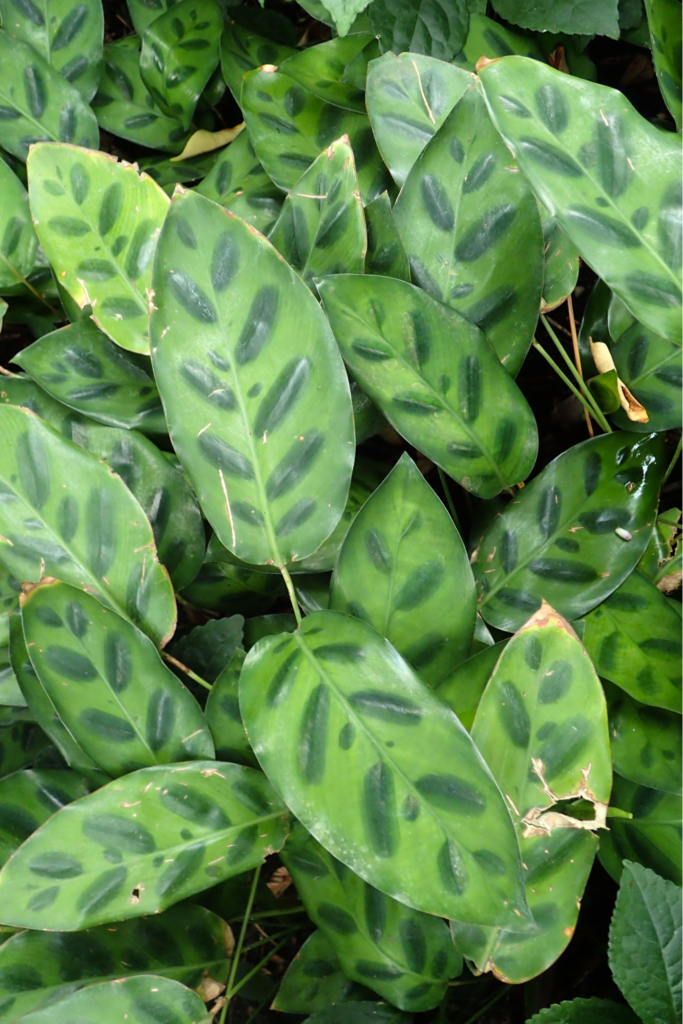
This particular Calathea species originates from Eastern Brazil and is among the few that can tolerate moderately colder temperatures. The leaves are almost similar to other Calatheas, broadly ovate with alternated dark green stripes or dashes on light green foliage.
The requirements of this Calathea are similar to other Calatheas. They require a humid environment, well-draining soil, and a stable temperature.
15. Calathea fasciata
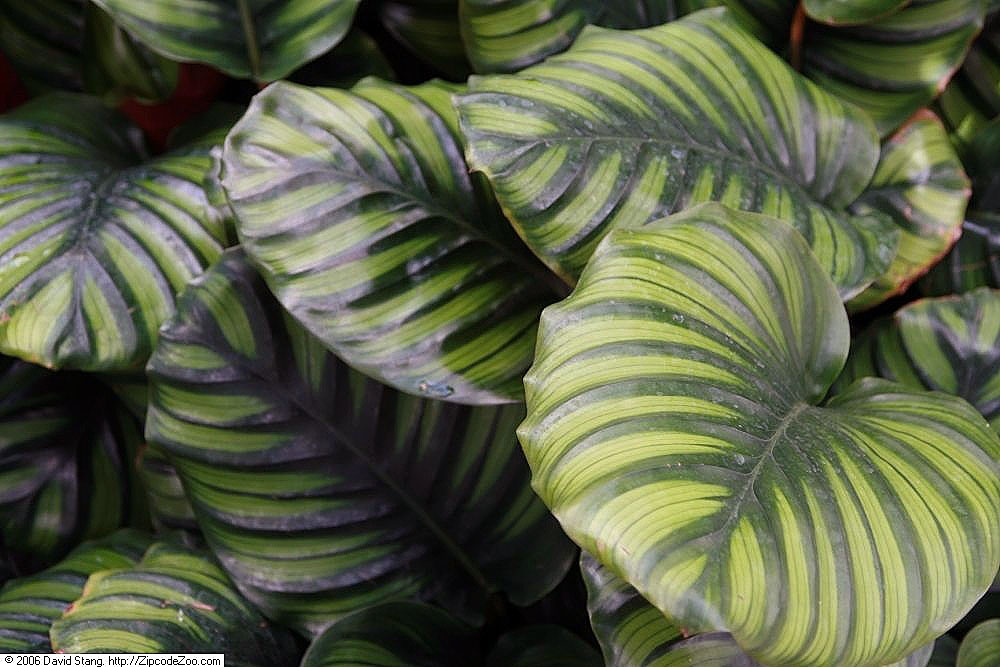
Calathea fasciata species are among the most trendy types and most common plants that can be found at your local garden centers. This plant is relatively easier to care for and maintain than other types.
This doesn’t mean that it looks any less magnificent, for it showcases its prominent deep green veins or stripes in contrast with its light green backdrop. It is also known for its glassy ovate leaves and its quite dainty arrangement.
16. Calathea elliptica or Calathea ‘Vittata’
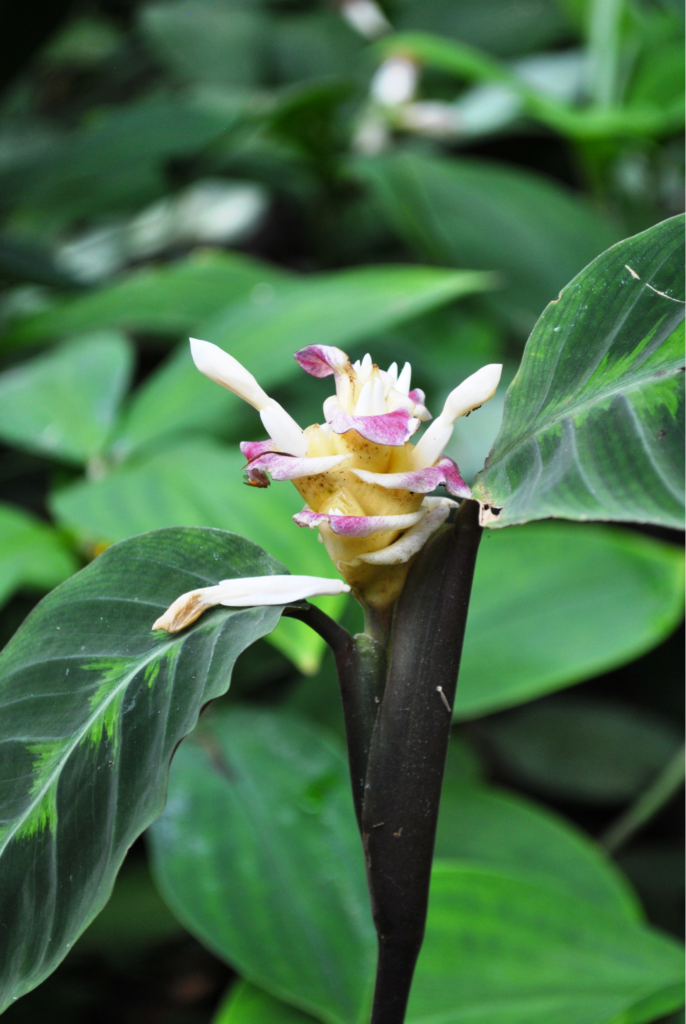
Calathea elliptica is known for its narrow white stripes and deep green stamped on its elliptical leaves. Its foliage has a mostly marbled appearance as sometimes the pattern has slight curves and swirls. These patterns originate from the leaf’s center towards its outer, upper edges.
This species, however, may also be tough to care for as it is susceptible to root rotting and scorching leaves. Be careful not to leave it under the sun for too long, and use well-draining soil.
17. Calathea ornata or Pin-Stripe Calathea
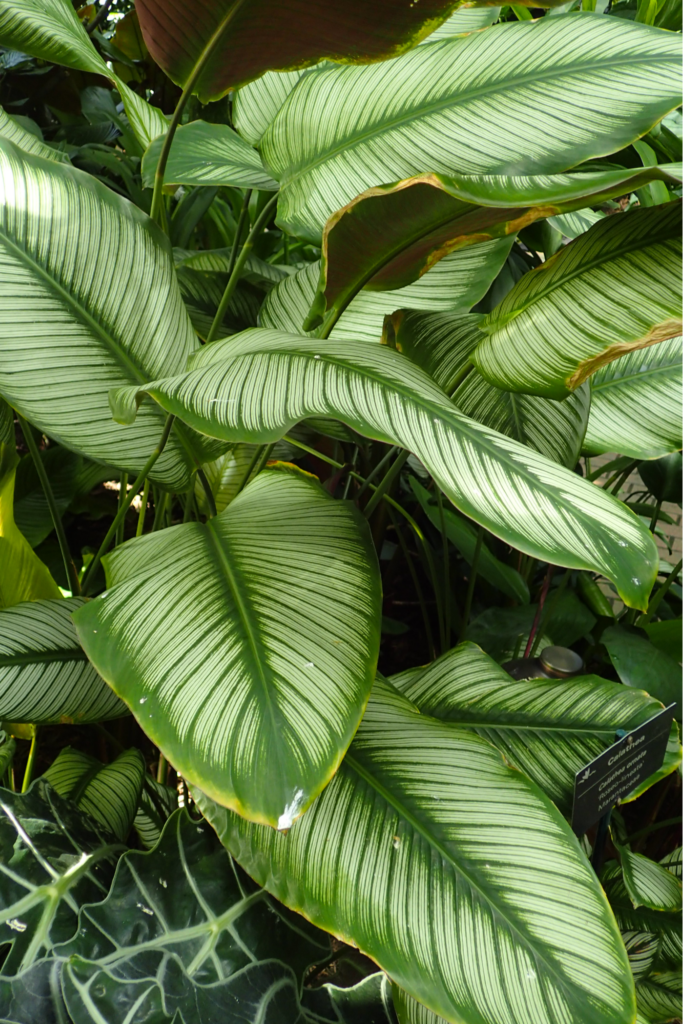
As per its scientific name, Pin-Stripe Calathea plant has ornate dark green leaves with gorgeous pin-stripe rows of pale pink placed on top of deep, rich green. The underside also features a deep, dark burgundy shade, making it even more elegant and regal.
Given that it looks elegant, it also requires a lot of particular care.
RELATED: How To Care for a Calathea Ornata? (Questions + Answers)
18. Calathea zebrina or Zebra Plant

The Zebra Calathea is also among the most popular Calatheas grown as houseplants. They are famous for their distinct stripes that can be white to yellow or even pink. Given the right conditions, a mature Calathea Zebra can be about three to four feet wide and tall.
The Zebra Calathea is native to Brazil and thrives best in an environment that is similar to the tropical rainforests where they come from. They can be fussy plants, especially to erratic temperatures and humidity. They love the partial shade.
RELATED: Alocasia Zebrina: The #1 Care, Propagation, and Watering Guide
19. Calathea albertii or Albert’s Prayer Plant/White Tiger Calathea
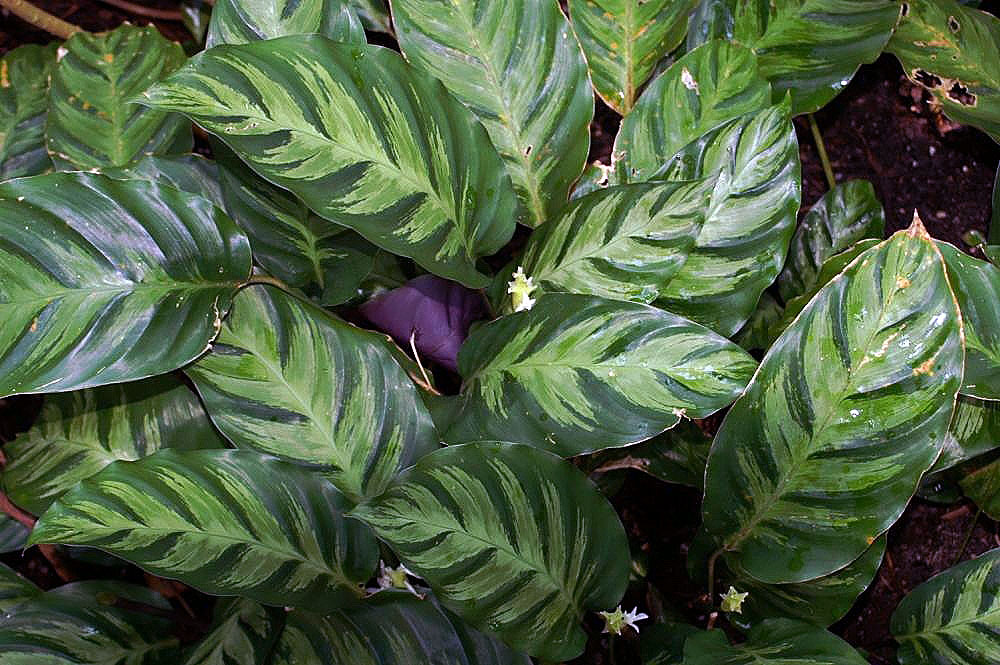
Another relatively larger houseplant, this species has ovate, broadly shaped leaves that have fabulous subtle ruffles on their edges. The leaf’s markings look like watercolor strokes of alternating shades of light to medium and dark green.
Like other Calatheas, White Tiger Plant can be high maintenance. They can require plenty of moisture and humidity, stable and warm temperatures, and a certain amount of sunlight and moisture.
20. Calathea louisae or Thai Beauty Calathea

Contrary to its nickname, Calathea louisae didn’t come from Thailand but in Brazil, specifically Rio de Janeiro. It has a subtle, mesmerizing look that will surely entice those who are minimalists but are keen on details. Its leaves are marked with white strokes in the centerline arranged in a rosette shape, which make a lovely swirl.
To keep this plant healthy, make sure to find the balance of using a balanced, well-draining potting soil mix, a humid and damp environment, and a regular watering routine.
Final Thoughts
Choosing plants to add to your garden is laborious but fun and rewarding. Therefore, it is important that you also consider their minimum requirements aside from their aesthetic values, to provide them with the proper love and care they deserve.
With this extensive diversity in one plant genus, we understand that it might be hard to choose just one Calathea. However, if you have the right resources and environment for these beautiful plants, don’t stop at one!
The sky’s the limit when it comes to creating a display using these fabulous plants!
Editor’s Recommendations
Alocasia Zebrina: The #1 Care, Propagation, and Watering Guide
Pink Syngonium: The Number 1 Care, Propagation, and Watering Guide
Rhaphidophora tetrasperma: The Complete Care, Watering, and Propagation Guide







